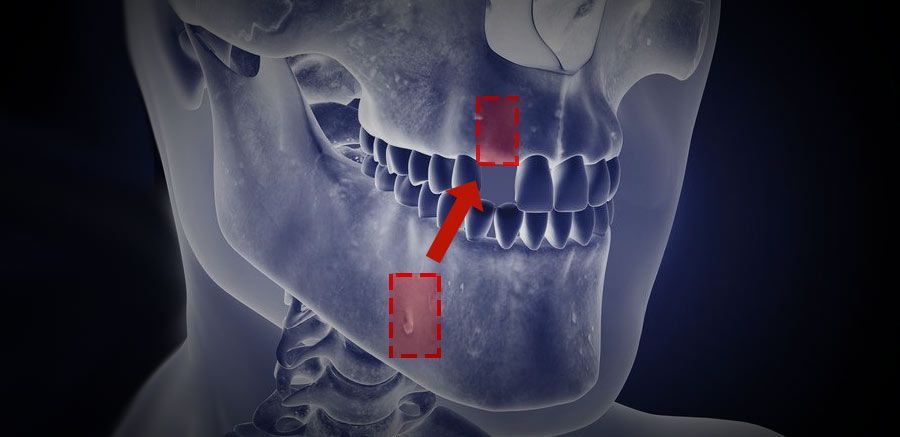Types of Bone Grafting
Bone grafting allows dentists to rebuild or strengthen the upper and lower jaws. A graft can address isolated bone loss or more widespread degeneration. There are several different types of bone grafting materials, including natural and synthetic options. Although grafting can be performed to correct the effects of injuries or congenital defects, the procedure is most often recommended for dental implant patients. The prerequisite procedure can increase the chances of an implant successfully fusing with the jaw, and also help patients who would otherwise not be considered good candidates.
Treatment Planning
Dental roots are necessary to maintain a dense, healthy jaw. Once a tooth is lost or extracted, the bone will naturally begin to deteriorate. Grafting can be performed immediately, known as socket preservation. The procedure can also be done after months or even years have passed. This is most often referred to as ridge augmentation. A sinus lift is a special type of graft in which the sinus floor is raised and the material is packed into the space below. Grafting techniques can also be combined to achieve the best outcome.
The dentist will typically base their recommendation on several factors, such as the location of the surgical site, the patient’s health and treatment goals, and the properties of the graft material. Ideal bone grafting material should integrate well with the patient’s natural bone, promote the growth of new tissue, and have a low likelihood of rejection at the surgical site.
Autografts
An autograft, also referred to as an autologous or autogenous bone graft, is bone taken from the patient’s own body. Autografts for dental procedures are typically harvested from the jaw, hard palate, or the chin. If there is not enough bone available in these areas, the tissue graft may be taken from the hip or shinbone. The main benefit of an autograft is that there is a low risk of graft rejection since the bone is native to the patient’s body. A drawback, however, is that an additional surgical site is required.
Understanding Autografts

In order to perform an autograft, a sample of healthy bone tissue can be taken from the chin.
Allografts
An allograft is usually harvested from deceased donors. Before bone or any other tissue can be used, the donor must be thoroughly screened to ensure no infectious diseases are present. After it is harvested, the bone must undergo a series of treatments to make it compatible with a recipient, with the goal of minimizing any potential immune reaction. Some of these treatments include irradiation (exposure to radiation), freeze-drying, and other chemical processes, such as the application of hydrochloric acid. The main drawback of allografts is the potential for an immune reaction or rejection of the donated tissue.
Xenografts
A xenograft is taken from an animal source, typically a cow or pig. With this type of graft, the bone is carefully processed so that the remaining tissue is primarily made up of mineral components. One advantage of xenografts is the ease of harvesting large samples of bone with the desired microstructure, which improves compatibility at the intended surgical site. Xenografts work well to help rebuild bone because they act as both a mechanical and biological placeholder in the jaw. Initially, the xenograft adds physical support at the surgical site. Over time, the body replaces the xenograft with new bone.
Alloplastic Grafts
An alloplastic graft is composed of material that is not taken from an animal or human source. Alloplastic grafts can be derived from natural sources (such as an elements or minerals), synthetic (man-made) substances, or a combination of the two. One reason many dentists prefer alloplastic grafts is that they do not require tissue to be harvested from another source.
Bone grafting can increase the chances of an implant successfully fusing with the jaw, and also help patients who would otherwise not be considered good candidates.
Alloplastic grafts can be made of hydroxyapatite (HA), calcium carbonate, and tricalcium phosphate. Hydroxyapatite is the most frequently used due to its strength, durability, and ability to integrate well with bone. In fact, a large percentage of human bone is composed of a form of hydroxyapatite. Calcium carbonate is becoming less popular because it tends to resorb more quickly and make the bone susceptible to breakage.
Ceramic
Another frequent component of alloplastic grafts is ceramic. Ceramics are inorganic, non-metallic materials composed of one or more elements. Ceramics are extremely hard and able to withstand very high temperatures. One major benefit of ceramic grafts is their ability to integrate with existing bone and promote the growth of new bone.
Bioglass
Bioglass, or bioactive glass, is similar to ceramic and is another potential source for dental bone grafts. Bioglasses can bond completely and seamlessly to bone. Unlike some other types of bone grafts, bioglass is available in many malleable forms, such as pastes and putties, making it ideal for shaping into a jawbone socket.
Polymers
Polymers are molecules composed of many repeating, smaller units. Polymers occur naturally, and they can also be synthetic. Dentists may choose a polymer-based alloplastic graft because it completely resorbs into the body over time.
Many types of alloplastic bone grafting materials can be combined to form a product with the most desirable characteristics. Alloplastic grafts may also contain one or more growth factors, which are made using recombinant DNA technology. These growth factors serve to facilitate new bone growth.
Protect Your Oral Health
For the right patients, a bone graft can provide the strong foundation needed to ensure their oral health. Consulting with your dentist or a specialist is necessary in order to learn more about your candidacy for these types of procedures.
